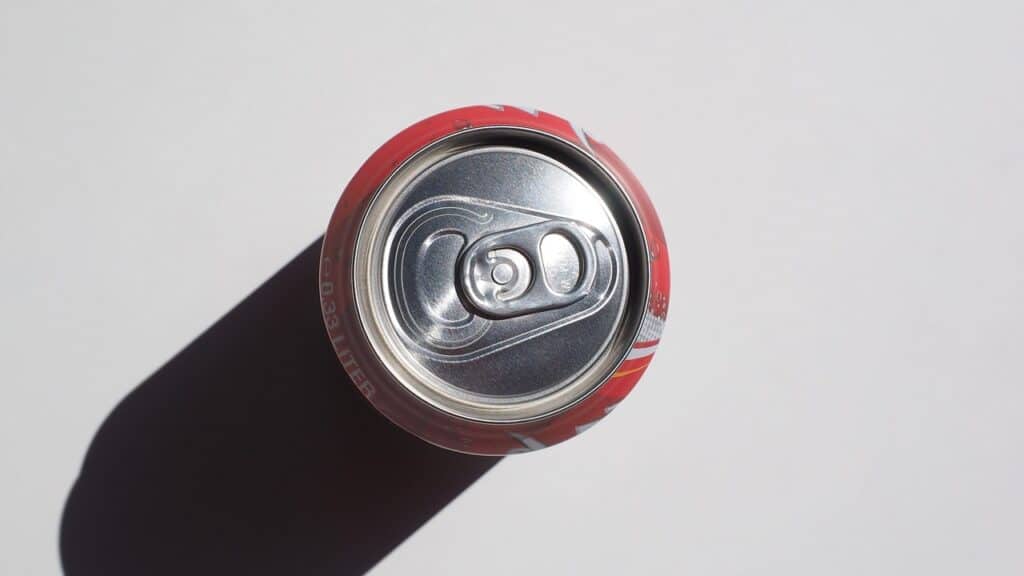
What are trademarks, and is it okay to use trademarks in your book? Learn all you need to know about trademarks in fiction and other writing (plus my megalist of trademarks reveals some surprising entries).
When I planned on writing this article, I thought it would be fairly short. Then I entered the trademark rabbit hole. Let’s dive in!
Disclaimer: I’m not an intellectual property (IP) lawyer. I’ve carried out extensive research for this post, but it does not replace legal advice. If you need to use the name of a company, brand or product in your writing, please seek independent advice.
What is a trademark?
A trademark is a name or mark of some kind that has been legally protected by a particular company. This gives them the sole legal right to use that name or mark for their product or service in the country or geographical region for which they own the trademark.
No other company can legally use the name for their product if it falls in the same trademark category. Even if it is a completely different type of product, permission may not be given to use the name.
As we’ll see in this article, many trademarks can be used in fiction and other writing but with complicated caveats.
Generic trademarks
A generic trademark (or genericised (genericized, if you prefer that spelling) trademark) has become so synonymous with a particular type of product that the company either loses the right to own it or loses the right to litigation should it be used. Some examples are jacuzzi, frisbee, escalator and hoover. You’ll see plenty more in the megalist of trademarks.
As far as my research tells me, a trademark can become generic purely due to excessive use by the general public to refer to all products of that ilk (e.g. all vacuum cleaners called hoovers (UK)).
Some companies work hard to prevent such genericide of their trademarks, such as Google and Coca-Cola (Coke), actively policing generic use of their product names. And with good cause, it seems. In many countries, companies can lose the right to the mark if they don’t take action such as sending ‘cease and desist’ letters and/or suing for infringement.
Other companies become victims of their success and either lose the trademark because use of the trademark spirals up in the public domain and they don’t crack down on it, or they keep the trademark but lose the right to sue over its use. These genericised marks are described in the megalist of trademarks as ‘generic’. As far as I understand, you can mostly use these in your book to your heart’s content (but please seek independent advice!).
What’s the difference between a trademark and a brand name?
A brand name is the name a company has given to their product or service. It may or may not be legally protected. A trademark is a brand name that is legally protected.
If you’d like to find out more, read this useful article on UpCounsel’s website that clearly explains the difference between a trademark and a brand name, as well as copyright, patents and more.
Can I use trademarks in my book?
If a trademark has expired or is no longer active due to genericisation, you’re free to use it however you wish. If a trademark is still owned by a company but is considered generic due to common use, you should also be fine to use it, as long as you aren’t portraying it negatively or implying endorsement or sponsorship.
If a trademark is still active and not considered generic, you need to tread more carefully. Seek legal advice or permission from the company, or use an alternative term. You will probably escape litigation if the following applies:
- You don’t use the trademark generically to refer to another product not made by the company that owns the trademark
- You use the trademark to describe the product accurately
- You don’t imply endorsement by the trademark owner
- You don’t show the product or brand in a negative light
However, some companies are quite litigious when it comes to their trademarks, so if in doubt, leave it out.
If you contact the company to ask for permission to use the trademark, be prepared to share any text that mentions either the company or its product. This course of action can be time-consuming if they are slow in responding, so take this into consideration if you’re writing to a deadline.
This excellent post by Matt Knight, an IP lawyer, concisely explains the use of trademarks in fiction in more detail.
What’s the alternative?
To avoid potential trademark infringement, consider making up your own brand names (if you write fiction) or using non-trademarked alternatives (for example, hot tub instead of Jacuzzi, or flying disc instead of Frisbee).
While you can use most trademarked names in your book as long as you aren’t showing them in a negative light or implying endorsement, it’s always advisable to either find a generic way to describe the item or make up your own brand name. I refer you to Duff Beer in The Simpsons (which ironically, is now trademarked!).
Do I need to use the trademark symbol?
No. When referring to trademarks in fiction and other writing, you do not need to use the trademark (™️) or registered trademark (®) symbols. There is one exception to this: if you’re writing for a company and they insist on it.
If you’re a fiction author using a trademark (and following all the advice above), you do not need to include a trademark symbol.
Should trademarks be capitalised?
The answer to this question, as with most grammar, spelling and punctuation questions, is ‘it depends’. If you’re using an active trademark (and following my advice above re. legal advice and permission), copy the capitalisation exactly as used by the company. This may not always be an initial capital (e.g. iPhone, eBay), or two or more words may be written without a space between, which is known as camel case due to the ‘humps’ (e.g PowerPoint, ChapStick).
Some generic trademarks can be written with a lowercase initial (e.g. biro, tannoy), unless you’re explicitly referring to the trademarked item or company name. However, different style guides and dictionaries have different preferences, so make sure to consult yours.
Most ex-trademarks (e.g. trampoline, escalator) are written in all lowercase as they have lost their proper noun status and become generic words.
Your editor or proofreader is likely to pick up any case issues or inconsistencies with trademarks in your writing, but please be aware that legal responsibility for this rests with you.
NB: In the megalist of trademarks, I have used an initial capital letter for all words (except for those like eBay or iPhone), as some can be written either upper or lowercase depending on context and/or style guide. Please consult your style guide or dictionary of choice for the correct way to write these words.
Megalist of trademarks
I’ve compiled a huge list of trademarks in the table below. Some are very much active; others have lapsed or expired. I’ve included who owns or owned the trademark and alternative terms you can use instead, to be on the safe side.
The list of trademarks is in alphabetical order, and I’ve used a capital initial for every term to avoid confusion. Some style guides and dictionaries accept generic trademarks with a lowercase initial in certain situations (e.g. New Oxford Dictionary for Writers & Editors lists ‘tannoy’ as lowercase when used generically (e.g. the tannoy system, that may or may not be made by Tannoy, but ‘Tannoy’ if using it as a trademark). Other terms are so generic as to always be written with a lowercase initial, e.g. trampoline.
Key sources of information for the megalist of trademarks:
- Wikipedia’s list of generic trademarks
- ITK Magazine’s post on how trademarks become generic
- dictionary.com’s list of genericised trademarks
- London IP’s list of surprising trademarks
Notes for using table:
- If marked as generic, with no trademark information, the term should be fine to use in your book. Please confirm this with your research!
- If marked as generic but with trademark information, the term should be fine to use in your book, but I advise you to do your own research or consult an IP attorney. My label of ‘generic’ does not replace legal advice!
- If marked as being a trademark owned by a company, ideally use an alternative term, seek permission, or use with CAUTION (e.g. not in a negative light – see advice in this article).
| Name | Trademarked? | Alternative term |
|---|---|---|
| Advil | Trademark owned by PF Consumer Healthcare | painkiller, ibuprofen |
| Airfix | Trademark owned by Hornby Railways | plastic injection-moulded scale model kit |
| Airfryer | Generic in US, but trademark still owned by Philips in the EU and elsewhere | countertop convection oven |
| Allen wrench/allen key | Trademark owned by Apex Tool Group | hex key |
| Aspirin | Generic in the US and UK (aspirin) but still a trademark of Bayer in Canada and many European countries (Aspirin) | painkiller |
| AstroTurf | Trademark owned by AstroTurf, LLC | artificial turf |
| Babygro | Generic (usually spelled ‘babygrow’), but trademark still owned by Delta Galil Europe Ltd | babygrow, infant bodysuit |
| Band-Aid | Trademark owned by Kenvue | plaster (UK), adhesive bandage |
| Biro | Generic, but still a registered trademark of Société Bic (inventor was László Bíró) | ballpoint pen |
| Bubble Wrap | Trademark owned by Sealed Air Corporation | inflated cushioning |
| Cashpoint | Generic, but trademark still owned by Lloyds Bank. | ATM, cash machine |
| Catseye | Generic. IP originally belonged to Reflecting Roadstuds Ltd | |
| Cellophane | Generic in the US (cellophane) but still trademarked by Innovia Films Ltd in Europe and elsewhere (Cellophane) | |
| ChapStick (lip balm) | Generic, but trademark still owned by Pfizer | lip balm |
| Cling film | Generic. Trademark has status of ‘abandoned’. | |
| Coke | Trademark owned by Coca-Cola Company | cola, soft drink, pop, soda (US) |
| Crock-Pot/Crockpot | Trademark owned by Sunbeam Products | slow cooker |
| Dictaphone | Trademark still owned by Nuance Communications, part of Microsoft | dictation machine |
| Ditto | Generic. Originally a term for ‘copying’, used to describe the Spirit Duplicator made by the Ditto Corporation of Illinois | |
| Dry ice | Generic. Originally trademarked in 1925 by the Dry Ice Corporation of America but expired in 1989. | |
| Dumpster | Generic. Trademark originally owned by Dempster Brothers and cancelled in 2015. | |
| eBay | Trademark owned by eBay. Note the lowercase ‘e’ followed by an uppercase ‘B’. Most style guides say to even retain this case at the start of a sentence. | online auction site |
| EpiPen | Trademark owned by Viatris (formerly Mylan) | epinephrine |
| Escalator | Generic. Originally a trademark of Otis Elevator Company. | |
| Filofax | Generic, but trademark still owned by FLB Group Ltd (formerly Letts Filofax Group) | personal organiser |
| Flip phone | Generic. Originally a trademark of Motorola. | |
| Flit gun | Generic. Originally trademarked as a dispenser for the insecticide brand Flit, made by the Standard Oil Company of New Jersey (later Exxon) | |
| Formica | Trademark owned by Formic Corporation | wood/plastic laminate |
| Frisbee | Generic, but trademark still owned by Wham-O | flying disc |
| Trademark owned by Alphabet Inc (Google’s parent company) | search engine | |
| Granola | Generic. Originally trademarked by Kellogg’s. | |
| Heroin | Generic. Originally trademarked by Friedrich Bayer & Co in 1898. | |
| Hoover | Generic, but trademark still owned by Hoover Company | vacuum cleaner |
| Hovercraft | Generic. Originally trademarked by Saunders-Roe. | |
| Hula-Hoop/hula hoop | Generic (hula hoop), but still trademarked in the US (Hula-Hoop) by Wham-O | toy hoop |
| iPhone | Trademark owned by Apple. See their full list of trademarks | phone, smartphone, mobile, cell phone (depending on context) |
| iPod | Trademark owned by Apple. See their full list of trademarks | portable media player |
| Jacuzzi | Generic, but trademark still owned by Jacuzzi | hot tub, spa, whirlpool bath |
| JCB | Generic, but trademark still owned by JC Bamford | backhoe loader |
| Jeep | Trademark owned by Chrysler | compact sport utility vehicle, SUV |
| Jell-O | Trademark owned by Kraft Heinz | gelatin dessert, jelly |
| Jet Ski | Trademark owned by Kawasaki | personal watercraft |
| Kerosene | Generic. Trademark previously owned by inventor Abraham Gesner | |
| Jiffy bag | Trademark owned by Sealed Air | padded envelope |
| Kleenex | Trademark still owned by Kimberley-Clark | tissue, facial tissue |
| Kool-Aid | Trademark still owned by Kraft-Heinz | drink mix |
| Koozie | Trademark still owned by Scribe OpCo Inc | can cooler |
| Lanolin | Generic | |
| Lava lamp | Generic, but trademark still owned by Mathmos | liquid motion lamp |
| Lilo/Li-lo | Generic, but trademark still owned by Li-lo | air mattress |
| Linoleum | Company name but never got trademarked | |
| Liquid Paper | Trademark owned by Newell Brands | correction fluid |
| Lego | Trademark owned by The Lego Group | interlocking bricks |
| Lycra | Trademark owned by The LYCRA Company | elastane, spandex |
| Mace | Trademark owned by Mace Security International | pepper spray |
| Magic Marker | Trademark owned by Bic Corporation | permanent marker |
| Matchbox | Trademark owned by Mattel | die cast toy |
| Memory stick | Generic, but trademark still owned by Sony Corporation | Flash memory storage device |
| Mickey Mouse | Trademark still owned by The Walt Disney Company | cartoon character/cartoon mouse |
| Muzak | Trademark owned by Muzak Holdings | elevator music, background music |
| Onesie | The plural ‘Onesies’ is a trademark owned by Gerber Childrenswear, who have successfully enforced their trademark over the singular ‘Onesie’ as well, and its use generically | infant/adult bodysuit |
| Pampers | Trademark owned by Procter & Gamble | nappies (UK), diapers (US) |
| Photoshop | Trademark owned by Adobe Inc | photo manipulation, photo-editing software |
| Ping-Pong | Trademark owned by Escalade Sports | table tennis |
| Plasticine | Trademark owned by Flair Leisure Products plc | modelling clay |
| Play-Doh | Trademark owned by Hasbro | modelling clay |
| Popsicle | Trademark owned by Good Humor-Breyers | ice pop, ice lolly (UK) |
| Portakabin | Trademark owned by Portakabin Ltd | portable building |
| Post-it Note | Trademark owned by 3M | sticky note |
| Pot Noodle | Trademark owned by Unilever | instant noodles |
| PowerPoint | Trademark owned by Microsoft Corporation | slide show presentation |
| Pritt Stick | Trademark owned by Henkel | glue stick |
| Q-tip | Trademark owned by Unilever | cotton bud (UK), cotton swab |
| Realtor | Trademark owned by National Association of Realtors | real estate agent |
| Rizla | Trademark owned by Imperial Tobacco | rolling paper |
| Rollerblade | Generic, but trademark still owned by Nordica | inline skates |
| Saran Wrap | Trademark owned by SC Johnson & Son | cling film, food wrap |
| Scalextric | Generic, but trademark still owned by the Hornby Railway Company | slot car |
| Scotch Tape | Trademark owned by 3M (correct name is Scotch brand cellophane tape) | adhesive tape |
| Sellotape | Trademark owned by Sellotape Company | adhesive tape |
| Sharpie | Generic, but trademark owned by Sanford LP | permanent marker |
| Sheetrock | Trademark owned by United States Gypsum Company | drywall boards/gypsum boards |
| Speedo | Trademark owned by Speedo | swim briefs, swimming trunks |
| Stanley Knife | Trademark owned by Stanley Works | utility knife |
| Stetson | Trademark owned by John B Stetson Company | cowboy hat |
| Styrofoam | Generic, but trademark still owned by DuPont | polystyrene foam |
| Super Glue | Trademark owned by Super Glue Corporation | extra-strong glue, cyanoacrylate adhesive |
| Super Hero | Generic. Trademark formerly jointly held by Marvel Comics and DC Comics; cancelled in September 2024. | |
| Taco Tuesday | Generic. Trademark originally owned by Gregory’s Restaurant and Bar, and Taco John’s. Abandoned in 2023. | |
| Tannoy | Generic but trademark still owned by Tannoy Ltd | public-address (PA) system |
| Tarmac | Generic, but trademark still owned by Tarmac | asphalt |
| Taser | Trademark owned by Taser Systems | stun gun |
| Teflon | Trademark owned by DuPont | non-stick coating |
| Thermos | Generic in the US but still a trademark of Thermos GmbH in much of the rest of the world | vacuum flask |
| Tipp-Ex | Trademark owned by Tipp-Ex GmbH & Co | correction fluid |
| Touch-tone | Generic. Formerly a trademark of AT&T. | |
| Trampoline | Generic. Originally a trademark of the Griswold-Nissen Trampoline & Tumbling Company. | |
| Transformer | Trademark owned by Hasbro/Tomy. In advertising, the term ‘transformer’ is used as little as possible to avoid the trademark becoming genericised. | toy that changes from a robot to a vehicle |
| Tupperware | Generic, but trademark still owned by Earl Tupper | plastic storage containers |
| Vaseline | Generic, but trademark still owned by Unilever. | petroleum jelly |
| Velcro | Trademark owned by Velcro Companies, who are adamant people shouldn’t say ‘Velcro’. | hook-and-loop fastener |
| Videotape | Generic (originally a trademark of Ampex Corporation) | |
| Walkman | Generic, but trademark still owned by Sony Corporation | personal stereo |
| Winnebago | Trademark owned by Winnebago Industries | recreational vehicle, motorhome |
| Xerox | Trademark owned by Xerox | to make a photocopy; photocopier |
| Yo-Yo | Generic, although Papa’s Toy Co Ltd in Canada still holds this trademark. | spinning toy on a string |
| Zamboni | Trademark owned by Zamboni Company | ice resurfacer |
| Zeppelin | Trademark owned by Luftschiffbau Zeppelin | rigid airship |
| Zimmer frame | Generic, although trademark still owned by Zimmer Holdings | walking frame |
| ZIP Code | Generic. Originally registered by the USPS but has expired. | |
| Ziploc | Trademark owned by SC Johnson | zipper/zipped storage bag |
| Zipper | Generic. Originally a trademark of BF Goodrich for use in rubber boots. | |
| Zoom | Trademark owned by Zoom Video Communications | videoconferencing, video calling |
In summary
Using trademarks in fiction (and other writing) is a complicated topic. It’s not a simple case of ‘yes, you can’ or ‘no way!’ It depends on whether the trademark is generic or active and how protective a company is of their brand and trademarks.
If a term used to be a trademark but is no longer one due to expiration, cancellation or genericisation, you’re free to use it.
However, don’t assume you can use an active registered trademark as long as you aren’t saying something negative about it. Seek permission or legal advice, or use an alternative term.
I’d like to thank Marinda Valenti for the inspiration for this article. Her LinkedIn post about trademarks in Merriam-Webster was the spark for my journey down the trademark rabbit hole!

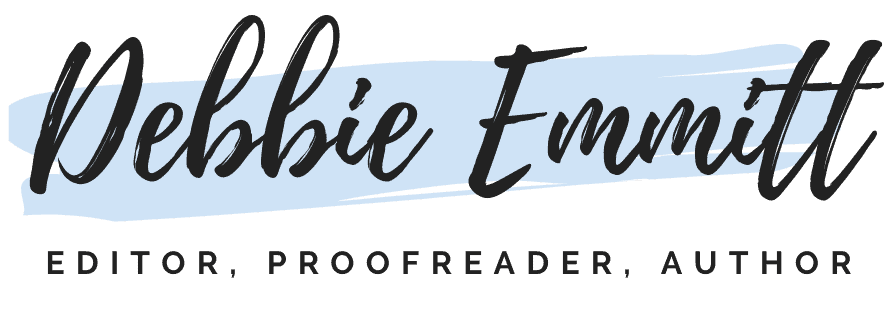

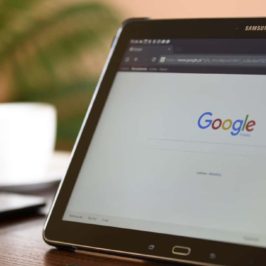


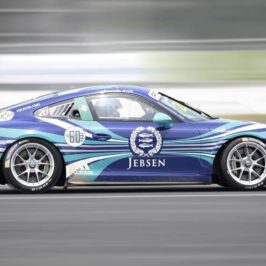

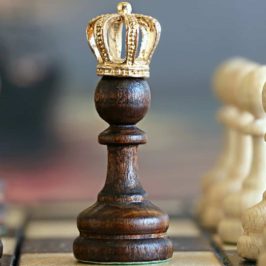
Leave a Reply